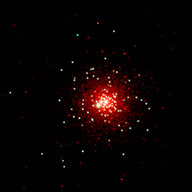
NGC 1851 is a massive globular cluster located in the Southern constellation of Columba. It is an unusual cluster speculated to be a product of the merger of two individual clusters. It has been known to have a bimodal horizontal branch in the H-R diagram. In this color-composite image, the blue dots are the Blue horizontal branch stars mostly distributed in the 2.4 arcmin radius of the cluster. These stars have evolved off the red-giant branch phase and are now burning helium in their cores.
Credits: UVIT Team/ISRO/CSA
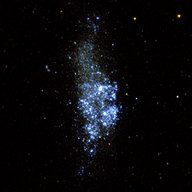
WLM (Wolf-Lundmark-Melotte) is a dwarf irregular galaxy of the Local Group located at a distance of 995 kpc. The galaxy is known as ’living cosmic fossil’ as it has formed during the early epoch of universe and has not interacted with other galaxy so far. The bright blue sources are the recent star forming regions of the galaxy. The point sources seen in the image are actually star clusters or stellar groups of the galaxy. This is a false color composite image of the galaxy where FUV and NUV are displayed by blue and yellow color respectively.
Credits: UVIT Team/ISRO/CSA
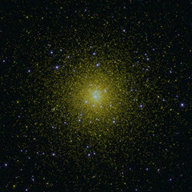
NGC 362 is a globular cluster in the constellation Tucana, in the northern edge of our satellite galaxy known as the Small Magellanic Cloud (SMC). The tightly packed stars which appear as white spot in the image form the core of the cluster. The light blue dots surrounding the cluster core are extreme horizontal branch stars. The bright blue dots scattered all over the image are hot, young stars in the SMC. This is a false color composite image, where the light detected by the FUV and NV channels of the UVIT are colored in blue and yellow respectively.
Credits: UVIT Team/ISRO/CSA
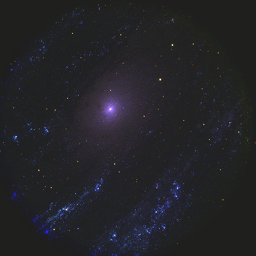
Andromeda galaxy, also known as M31, is the closest spiral galaxy similar to our own Milky Way. UVIT observed the central region of M31 in three different ultraviolet wavelengths and this picture combines them in a false-color image. The blue objects are hot stars and the red ones are cooler. The fuzzy object is the nucleus of M31, which contains a massive black hole, a surrounding population of faint hot stars, and regions of dust. The other bright areas are regions of massive hot stars that have recently formed in the spiral arms of the galaxy.
Credits: UVIT Team/ISRO/CSA
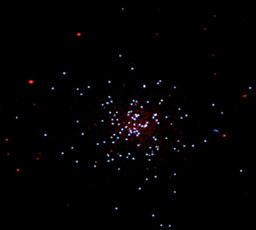
NGC 288 is a globular cluster in the constellation Sculptor, close to the South Galactic Pole. The stars within globular clusters form at about the same time, making these close families of stars. The colors and brightnesses of the stars in the picture tell the story of how the stars have evolved in the cluster. The bright blue stars are being powered by helium fusion in their cores. This is a combined image of the Far-UV and near-UV channels of the UVIT.
Credits: UVIT Team/ISRO/CSA
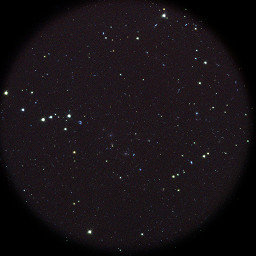
Galaxy clusters containing 100-1000 galaxies are the most massive gravitationally-bound structures in the Universe. Ultraviolet radiation from galaxies in Abell 2256 located at a distance of 250 Mpc takes about 800 million years to reach earth. The color composite is created using three near-UV narrow band filters with an exposure time of 5 hours. The high angular resolution and multiple filters of UVIT is well suited to study star formation in galaxies.
Credits: UVIT Team/ISRO/CSA




